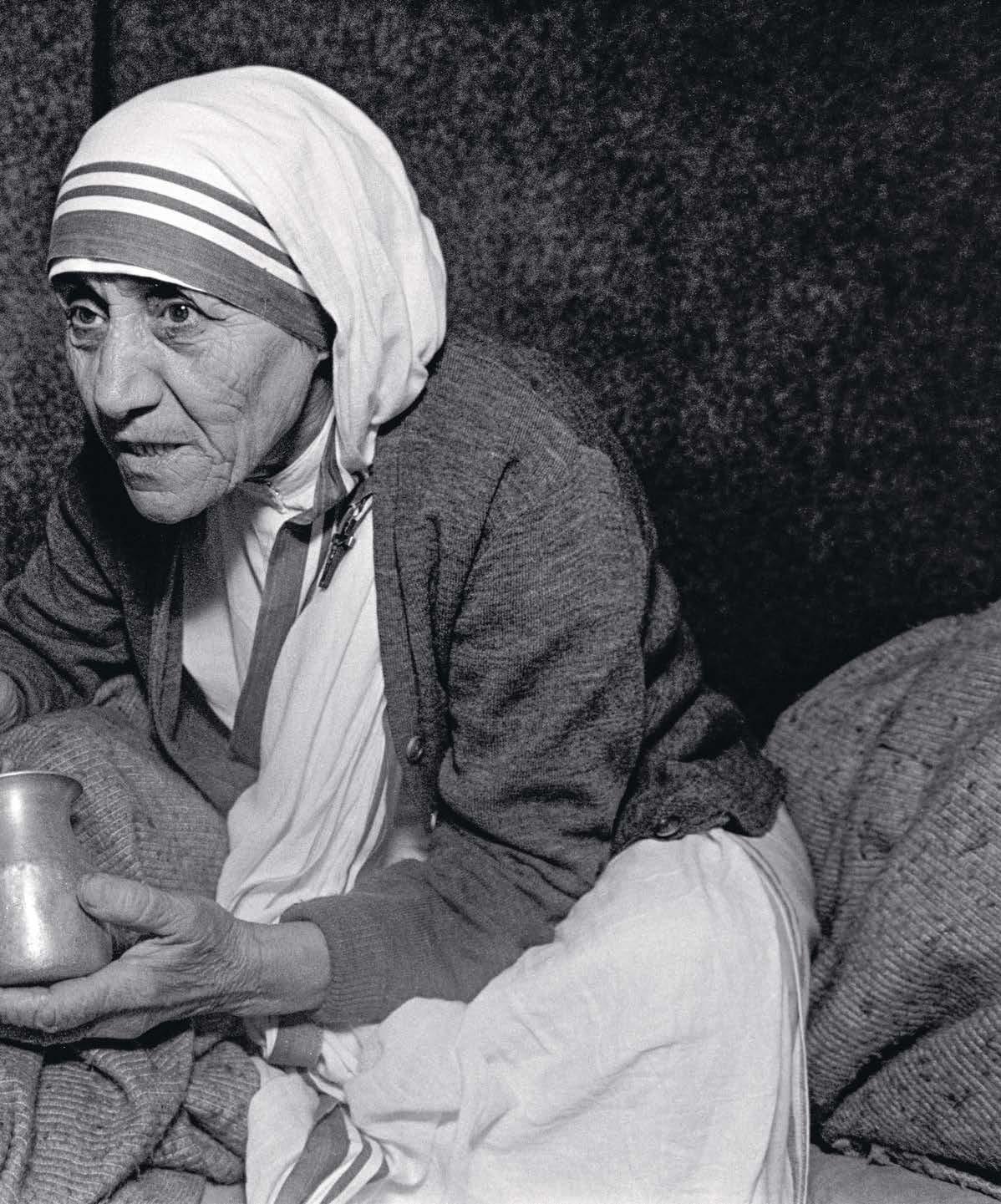
5 minute read
LEICA CLASSIC
Mary Ellen Mark
THERE IS NOTHING MORE EXTRAORDINARY THAN REALITY
With great empathy and passion, Mary Ellen Mark succeeded in capturing more emotionally intense portraits than almost any photojournalist of her time. A new publication – encompassing the most comprehensive collection of her work to date – now honours the late photographer’s exceptional oeuvre.
The photographer met nine-year-old Amanda (pictured with her cousin Amy) in North Carolina, while documenting a school for problem children on behalf of Life magazine


Miss American Teenager beauty pageant; Palisades Amusement Park, Cliffside Park, Fort Lee, New Jersey 1965 (top). Kissing couple at a pro-Vietnam War march; New York 1968 (left)


Bodybuilder at the Mr. America contest of the World Body Building Guild; Brooklyn Academy of Music, Brooklyn, New York 1968 (top). Laurie in the bathtub; Ward 81, Oregon State Hospital, Salem, Oregon 1976 (left)




Federico Fellini with a megaphone on the set of Fellini Satyricon; Rome 1969 (top). Brooke and Billy at the Gibbs Senior High School graduation ball; St. Petersburg, Florida 1986 (left)




, Steidl 2020 Photos: © Mary Ellen Mark/The Mary Ellen Mark Foundation. All quotes taken from: The Book of Everything
MARY ELLEN MARK
Born on March 20, 1940 in Philadelphia. Studied Painting and Art History at the University of Pennsylvania (1958 to 1964). Freelance photographer in New York from 1966 onwards. Her first publication, Passport, was released in 1974, followed by her first exhibition in London two years later. Member of the Magnum Agency from 1977 to 1981. Married film director Martin Bell in 1981. Numerous awards, including the Leica Medal of Excellence for her Falkland Road series on prostitutes in Bombay. Her most important publications include Ward 81 (1979), Streetwise (1988), Indian Circus (1993), Twins (2003), Exposure (2005), and Tiny: Streetwise Revisited (2015). Mary Ellen Mark passed away from cancer in New York City on May 25, 2015.
THE BOOK OF EVERYTHING
Edited by Martin Bell, Julia Bezgin, Meredith Lue, 3 volumes in a slipcase; 880 pages, 624 colour and black and white images, 24.5 x 32.2 cm, English, Steidl A pretty girl, all spruced up in a ruffle dress – confidently holding her pose for the stranger with the Leica: the year was 1965 and Mary Ellen Mark, who was exploring eastern Turkey on a Fulbright scholarship, had just crossed paths with Emine. “I saw this child and thought she was beautiful. She took me to her small house, where we had tea with her mother, and I made this photograph in their back courtyard. She was extremely seductive for a child so young,” the photographer remembers. There is another reason why this encounter has stayed etched in her mind: “This was probably the first strong photograph I made. It was a turning point for me.” Even this early example reveals some core characteristics of the photographer’s approach: nothing is rushed; the composition, background, framing and details are well thought-out in order to create the perfect image. Despite the many large-scale projects she completed throughout her career, Mark always remained a master of the single frame. “A portrait is a single image that captures the essence of a person,” she once explained. “Even when I did documentary stories for magazines, I tried to capture single iconic images that stood on their own.”
Five years after Mark’s death, the new publication comprises a unique selection of images compiled by her husband, Martin Bell, together with two long-time confidantes and experts of her work. “Mary Ellen would never have made this book,” Bell reveals in his epilogue. “She would have nixed the idea because, although she did frequently revisit subjects and themes covered over her many years of projects and assignments, she rarely revisited her contact sheets and chromes. Her energy was fuelled by a need to constantly produce stories, and a deep emotional force that drove her into each new project. There was never enough time to reflect on what was – it was only: what’s next?”
Bell’s preparations for this monumental endeavour began four years ago. “I started choosing images from her thousands of contact sheets and chromes. I looked at every frame – more than two million. I noted her 63 110 selects, which included neverbefore-published images, publishedonce-and-lost-in-time images, and iconic images that have been continuously published. To this I added 5977 images I thought she had missed.” In collaboration with Mark’s archive manager of twenty years, Meredith Lue, and her studio manager of twelve years, Julia Bezgin, Bell created The Book of Everything, “a testimony to what we believe Mary Ellen achieved during her remarkable life”. The three beautifully printed volumes seem to encapsulate the very essence of Mark’s work, and clearly illustrate the passion with which she immersed herself in her chosen themes. Her images are characterised by a profound empathy for her subjects, especially those on the margins of society.
More than 600 works – spanning from the early 1960s to the year of her death – are arranged in loosely chronological order, with memories written by friends, collaborators and people she portrayed. A moving collection of special moments from a long career – or, in Bell’s words, “a visual diary of her life experiences, revealing the breadth of her curiosity as well as her ability to intimately enter the lives of the people she brought to us, no matter their circumstances”. The expressive power of Mary Ellen Mark’s portraiture is undiminished even to this day. Whether she photographed celebrities or unknown contemporaries, she always looked at the reality beneath the surface. With a keen sense for context and composition, she created subtle images that are at once moving and full of tension, without ever compromising her subjects’ dignity. Her photographs are far more than documents of everyday life; instead, her work is the embodiment of a humanistic perspective that is well worth rediscovering. ULRICH RÜTER











